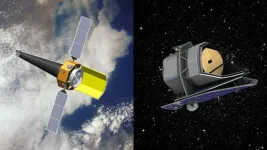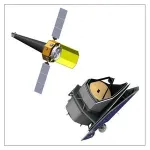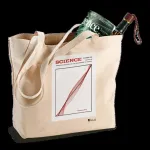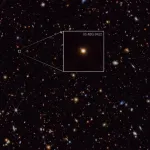(Press-News.org) On October 3, 2024, NASA announced that two space probes proposed by University of Maryland astronomers have advanced to the next round of consideration for a $1 billion mission slated to launch into orbit in 2032.
The selected probes include the Advanced X-ray Imaging Satellite (AXIS) mission with UMD Astronomy Professor Christopher Reynolds as its principal investigator and the PRobe far-Infrared Mission for Astrophysics (PRIMA) with UMD Astronomy Professor Alberto Bolatto as a co-investigator and NASA Goddard Space Flight Center researcher and UMD Astronomy Adjunct Professor Jason Glenn as its principal investigator.
“It's a huge achievement for three of our astronomy faculty members to be leading the charge on missions that will explore the cosmos in an entirely new way,” said Amitabh Varshney, dean of the College of Computer, Mathematical, and Natural Sciences.
"This is terrific news—Chris, Alberto and Jason are true leaders in their fields,” added Andrew Harris, chair of UMD’s Department of Astronomy. “They, along with colleagues at NASA Goddard and other institutions, have made the scientific cases that drive these exciting missions forward to the next stages possible."
This announcement follows NASA’s creation of a new class of astrophysics observatories, called probes, which are smaller than “flagship” missions like the James Webb Space Telescope but still capable of tackling the big questions in astrophysics. NASA plans to select either a far-infrared or X-ray observatory to investigate the birth of planets, as well as the evolution of galaxies and black holes, in the early universe.
Over the next year, each team will receive $5 million to flesh out their plans and prototypes for AXIS and PRIMA even further. NASA will then re-review the proposals and select one mission to move forward in 2026.
below about the proposed missions and what the UMD astronomers behind them hope to discover.
AXIS
AXIS will be able to peer “further and wider” into the early cosmos than previous X-ray observatories, according to Reynolds.
Thanks to new technologies that have been developed at NASA Goddard over the last few years, AXIS would be 10 times more sensitive to X-rays than the Chandra X-ray Observatory was at its launch in 1999. The biggest innovation was the development of X-ray mirrors large enough to collect numerous X-rays but sensitive enough to capture extremely high-quality images—a tricky balancing act that can yield vital planetary information.
X-rays come from extremely hot processes such as the explosion of stars or the accretion of black holes, so tracing them back to their source can paint a picture of galactic formation. As scientists search for life beyond Earth, X-rays could even offer clues about potentially habitable planets.
In extreme cases, stars with intense flares and coronal mass ejections could strip surrounding planets of their atmospheres, making those places uninhabitable. On the opposite end of the spectrum, using X-rays to find “quieter” and less active stars could help researchers find nearby planets that are potentially habitable.
“Because AXIS is so sensitive, it can detect quite easily the X-rays from other stars and categorize how active they are, how powerful their flares are and how powerful their corona is,” Reynolds said. “Then, it can start to connect that to the properties of any planets that might exist around it.”
Reynolds, who is also the director of the Joint Space-Science Institute, a research partnership between UMD and NASA Goddard, said another goal of AXIS is especially relevant to his research: observing some of the earliest black holes in the universe.
“The AXIS observatory is designed to be able to detect X-rays from the first supermassive black holes in the first 500 million years of the universe,” Reynolds said. “Some scenarios predict that we should see lots of black holes in that era, and others say that we shouldn’t. It's very much an unanswered question of when those first supermassive black holes emerged and what were their progenitors.”
Reynolds also hopes to study how central black holes, which sit in the middle of galaxies, influence the formation of stars and other celestial objects around them. While Webb has already made significant strides in black hole research, Reynolds explained that AXIS could complement or even expand on its findings.
“We have a much wider field of view than James Webb, so the patch of sky we're looking at is much larger. That means that we can survey the sky in a more efficient and faster way,” Reynolds said. “We are looking forward to the next generation of X-ray astronomy.”
PRIMA
PRIMA has similar goals to AXIS—including exploring the formation of black holes and stars—but it would see the early universe a lot differently. PRIMA is designed to pick up on far-infrared radiation, which, according to Bolatto, is an “underserved” wavelength in astronomy missions.
The Herschel Space Observatory, which was operational from 2009 to 2013, was the last space observatory capable of detecting these longer wavelengths. Bolatto said that one advantage of a far-infrared observatory is its ability to “cut through the muck” of cosmic dust and gas in a way that past and present telescopes, including Webb, could not do as efficiently. This would allow PRIMA to simultaneously study the growth of black holes and their host galaxies when they are heavily obscured, which is a common experience in the early universe.
While astronomers ultimately want to peer past space dust to see other objects, PRIMA researchers will also pause to analyze the odd amalgamation of rock, minerals and other materials in their path.
“We don't know how dust happens,” Bolatto said. “We sometimes measure very large quantities of dust in the very early history of the universe, but it’s not clear where it comes from. So understanding how that process happens is part of what we’re trying to achieve.”
With PRIMA, researchers also want to look back to a time before the planets formed. They plan to analyze protoplanetary disks—collections of gas and dust orbiting young stars that are the birthplace of planets—to determine how much water is needed for different types of planets to form. Doing so could even uncover where Earth’s water came from, a mystery that has not been definitively solved.
“We can see protoplanetary disks now, but measuring how massive they are is incredibly difficult with radio astronomy or with near-infrared probes,” Bolatto said. “With PRIMA, we will be able to measure the mass of protoplanetary disks directly in a much better way than anybody has been able to do up till now.”
Bolatto noted that PRIMA’s cutting-edge technologies should enable plenty of new discoveries. Like Webb, PRIMA’s telescope would be cryogenically cooled to reduce infrared background noise, but it will reach even colder temperatures—about 4.5 K, or -450 degrees Fahrenheit—to improve the instrument’s sensitivity.
PRIMA would also be outfitted with a wide-field camera, a high-resolution spectrograph to study the chemical composition of cosmic objects not seen before and state-of-the-art kinetic inductance detectors developed by NASA’s Jet Propulsion Laboratory in collaboration with Goddard to measure far-infrared radiation. Goddard would also equip PRIMA with a high-resolution spectrometer, enabling scientists to detect water in protoplanetary disks as well as galactic winds caused by supermassive black holes.
Glenn said that he and his colleagues are excited to see what comes next for PRIMA.
“The PRIMA team is excited and grateful for this opportunity to develop a concept for the first NASA Astrophysics Probe Explorer,” Glenn said. “Our extraordinary team of scientists and engineers is going to enable humankind to understand how black holes and galaxies evolved together and how planets got their atmospheres."
Bolatto added that PRIMA could be a gamechanger for astrophysics if it’s ultimately selected to become the next probe mission.
“The excitement is that we are going to get to see a completely new sky because there are things that we couldn't dream of doing 10 years ago that we will be able to do with the technology we have now,” Bolatto said. “The amount of science that can come out of PRIMA would be fantastic.”
END
Two UMD Astronomy space probes advance to next round of $1 billion NASA mission selection
Proposals from Christopher Reynolds for an X-ray mission and Alberto Bolatto and Jason Glenn for a far-infrared mission are closer to being realized.
2024-10-03
ELSE PRESS RELEASES FROM THIS DATE:
New MSU research sheds light on impact and bias of voter purging in Michigan
2024-10-03
MSU has a satellite uplink/LTN TV studio and Comrex line for radio interviews upon request.
Images and Podcast
EAST LANSING, Mich. – In recent years, some states have prioritized purging their voter rolls of those who have passed away or moved out of state. During election season, there is often increased discussion about the necessity and impact of these actions. Voter purging can be an important step for creating election integrity, but others have raised concerns about how the process is conducted and who it targets.
So, are there negative effects of voter purging? Researchers from Michigan State University wanted to find out — especially ...
Funding to create world's first ovarian cancer prevention vaccine
2024-10-03
In this study, the Cancer Research UK-funded scientists will establish the targets for the vaccine. They will find out which proteins on the surface of early-stage ovarian cancer cells are most strongly recognised by the immune system and how effectively the vaccine kills mini-models of ovarian cancer called organoids.
If this research is successful, work will then begin on clinical trials of the vaccine. The hope is that in the future, women could be offered this vaccine to prevent ovarian cancer in the first place.
There are around 7,500 new ovarian ...
Scientists develop novel method for strengthening PVC products
2024-10-03
COLUMBUS, Ohio – Researchers have developed a way to make one type of plastic material more durable and less likely to shed dangerous microplastics.
The study identified a secure way to attach chemical additives to polyvinyl chloride (PVC).
Found in everything from toys, construction supplies and medical packaging, PVC plastics currently rank third among the most used plastics worldwide. Despite its widespread use, pure PVC is brittle and sensitive to heat, and manufacturers can only utilize it after stabilizing its properties with other chemicals.
However, these additives, or plasticizers, ...
Houston Methodist part of national consortium to develop vaccine against herpesviruses
2024-10-03
Houston Methodist researchers will be part of a national consortium funded by an up to $49 million award from the U.S. Government’s Advanced Research Projects Agency for Health (ARPA-H) to develop a vaccine against two of the most common and destructive strains of herpesviruses that latently infect a majority of Americans and can lead to acute infections, multiple forms of cancer, autoimmune disease and birth defects.
The award is part of ARPA-H’s Antigens Predicted for Broad Viral Efficacy through Computational Experimentation (APECx) program and will fund the America’s SHIELD project ...
UT Health San Antonio School of Dentistry earns first NIH grant under new center for pain therapeutics and addiction research
2024-10-03
SAN ANTONIO, Oct. 3, 2024 – The School of Dentistry at The University of Texas Health Science Center at San Antonio (UT Health San Antonio) earned the first National Institutes of Health grant under its new Center for Pain Therapeutics and Addiction Research, addressing pain in patients with head and neck carcinoma.
The nearly $600,000 grant by the NIH’s National Institute of Dental and Craniofacial Research will address this critical pain issue that significantly impairs quality of life. Many head and neck carcinoma patients require opiate pain management, but tolerance develops quickly, requiring new pain ...
Do MPH programs prepare graduates for employment in today's market? Mostly yes, but who is hiring may be surprising
2024-10-03
Public health degree programs provide key competencies demanded by employers, but graduate employability could be improved by using more real-time data from employer job postings, according to a new study at Columbia University Mailman School of Public Health. This could help public health schools and programs ensure that graduates obtain specific technical skills listed in job postings, meet current employer needs, and prepare graduates for the demands of today’s labor market. The findings are published in the American Journal of Public Health.
The competencies required for the ...
New article provides orientation to using implementation science in policing
2024-10-03
Since the 2020 murder by Minneapolis police of George Floyd brought nationwide calls for change amid concerns that prevailing practices were not grounded in evidence and created harm, policing has been in turmoil. Implementation science (IS) involves integrating effective and evidence-based innovations into routine practice in fields like health care. Yet despite its potential, IS—and specifically, evidence-based policing (EBP)—remain vastly understudied and unused in police settings. In a new article, researchers provide an orientation to these issues ...
Three beer-related discoveries to celebrate Oktoberfest
2024-10-03
Frothy or smooth, bitter or sweet, light or dark: There’s a beer for most palates. As people around the world pour over the best brews at Oktoberfest celebrations or ferment about their favorite fall-themed beers, three papers published in ACS journals crack open new insights into these beverages. And if you’re hop-ing to conduct studies to find which beer is good for what ales you, please drink responsibly. Reporters can request free access to these papers by emailing newsroom@acs.org.
Coriander’s origin changes beer flavor. Just like simmering a stew, brewing a beer with herbs and spices can enhance its flavor. A study in ACS Food Science ...
AAAS launches user research project to inform the new AAAS.org
2024-10-03
Washington, D.C. — The American Association for the Advancement of Science, one of the world’s largest general scientific societies and publisher of the Science family of journals, announces an external research project to help the organization reimagine AAAS.org as part of a website overhaul project, which recently kicked off. AAAS is seeking input from its key audiences, including reporters and public information officers, to better align the experience and content of the website. As AAAS embarks on the next ...
In odd galaxy, NASA's Webb finds potential missing link to first stars
2024-10-03
Looking deep into the early universe with NASA’s James Webb Space Telescope, astronomers have found something unprecedented: a galaxy with an odd light signature, which they attribute to its gas outshining its stars. Found approximately one billion years after the big bang, galaxy GS-NDG-9422 (9422) may be a missing-link phase of galactic evolution between the universe’s first stars and familiar, well-established galaxies.
“My first thought in looking at the galaxy’s spectrum was, ‘that’s weird,’ which is ...
LAST 30 PRESS RELEASES:
Tracing the quick synthesis of an industrially important catalyst
New software sheds light on cancer’s hidden genetic networks
UT Health San Antonio awarded $3 million in CPRIT grants to bolster cancer research and prevention efforts in South Texas
Third symposium spotlights global challenge of new contaminants in China’s fight against pollution
From straw to soil harmony: International team reveals how biochar supercharges carbon-smart farming
Myeloma: How AI is redrawing the map of cancer care
Manhattan E. Charurat, Ph.D., MHS invested as the Homer and Martha Gudelsky Distinguished Professor in Medicine at the University of Maryland School of Medicine
Insilico Medicine’s Pharma.AI Q4 Winter Launch Recap: Revolutionizing drug discovery with cutting-edge AI innovations, accelerating the path to pharmaceutical superintelligence
Nanoplastics have diet-dependent impacts on digestive system health
Brain neuron death occurs throughout life and increases with age, a natural human protein drug may halt neuron death in Alzheimer’s disease
SPIE and CLP announce the recipients of the 2025 Advanced Photonics Young Innovator Award
Lessons from the Caldor Fire’s Christmas Valley ‘Miracle’
Ant societies rose by trading individual protection for collective power
Research reveals how ancient viral DNA shapes early embryonic development
A molecular gatekeeper that controls protein synthesis
New ‘cloaking device’ concept to shield sensitive tech from magnetic fields
Researchers show impact of mountain building and climate change on alpine biodiversity
Study models the transition from Neanderthals to modern humans in Europe
University of Phoenix College of Doctoral Studies releases white paper on AI-driven skilling to reduce burnout and restore worker autonomy
AIs fail at the game of visual “telephone”
The levers for a sustainable food system
Potential changes in US homelessness by ending federal support for housing first programs
Vulnerability of large language models to prompt injection when providing medical advice
Researchers develop new system for high-energy-density, long-life, multi-electron transfer bromine-based flow batteries
Ending federal support for housing first programs could increase U.S. homelessness by 5% in one year, new JAMA study finds
New research uncovers molecular ‘safety switch’ shielding cancers from immune attack
Bacteria resisting viral infection can still sink carbon to ocean floor
Younger biological age may increase depression risk in older women during COVID-19
Bharat Innovates 2026 National Basecamp Showcases India’s Most Promising Deep-Tech Ventures
Here’s what determines whether your income level rises or falls
[Press-News.org] Two UMD Astronomy space probes advance to next round of $1 billion NASA mission selectionProposals from Christopher Reynolds for an X-ray mission and Alberto Bolatto and Jason Glenn for a far-infrared mission are closer to being realized.




